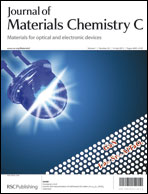Printed electrically conductive composites: conductive filler designs and surface engineering
Abstract
Enormous efforts have been made towards the next generation of flexible, low-cost, environmentally benign printed electronics. In this regard, advanced materials for the printed conductive lines and interconnects are of significant importance. To improve efficiency and effectiveness, for several decades, conductive fillers have been filled into dispersants, which lead to the so-called electrically conductive composites (ECCs), which are a key material to the printed electronics varying from substituting the traditional solders to finding new applications in the blooming field of flexible printed electronics. ECCs in various formulations have converged in the current efforts to develop platforms with the desired specifications of electrical and thermal conductance, mechanical strength, and others. This platform is highly versatile and valuable for the emerging novel electronic devices, which emphasize tailoring processing conditions to cater to the key functional materials to optimize outcomes. The properties obtained can facilitate decisions about modifications to treatment. Noble metal fillers, such as silver flakes, have long been studied as active fillers for the ECCs. Owing to the recent progress in nanotechnology and surface modifications, many new avenues have opened for them. By taking advantage of the well-developed surface chemistry of these materials, researchers are enhancing their electrical conductivity, which is essential for broader applications. In recent years, the advances of ECCs have benefited the development of the applications of optoelectronics, e-papers, electromagnetic shielding, clinical diagnosis, radio frequency devices, etc. Despite the various advantages that they can offer over the traditional technologies, their limitations, e.g. low electrical conductivity, poor impact strength, increased contact resistance at elevated temperatures and humidity aging, have been considered as the major obstacles. In this feature article, we introduce the surface engineering techniques of the conductive filler materials that we and others have developed, with an emphasis on how these techniques influence the performance of the ECCs, especially for the improvement of the filler-to-filler electron transfer in the resin dispersants, some of which have potentially been approaching the theoretical upper limit of what they can reach in electrical conductivity. We and others have developed a set of chemical and engineering methods to modify the conductive fillers, enabling tailor-made surface functionalities and charges. These features, in turn, can be harnessed to adjust the electrical property and reliability of the ECCs, and further, to cater to various novel printed electronics, based on e.g. low temperature processing conditions.


 Please wait while we load your content...
Please wait while we load your content...